How to Make Hydrosol
(video not playing? click here to watch)
Learn how to make hydrosols from beautiful aromatic plants like rosemary, lemongrass, lemon verbena and many more.
Check out the video and then read below for the full low down on;
- What is a Hydrosol?
- How do I use a Hydrosol?
- How to Make a Hydrosol - video and written explanation
- How to Store Hydrosol
- What Plants can I Use?
What is a Hydrosol?
Before I explain how to make hydrosol you may be wondering what exactly is a hydrosol.
A hydrosol is the steam distillation of an aromatic plant. Hydrosols are sometimes referred to as flower waters or herbal distillates.
Be aware though that some things that are sold as 'flower waters' are not true distillations of the plant but rather water that has had some of the plant oils added in.
A true hydrosol is created from the steam distillation and when done in this way the hydrosol is a beautiful essence of the plant.
As I learned how to make hydrosol I realized that the method of making a hydrosol is actually a step in creating an essential oil. Making a usable quantity of essential oil though, requires a huge amount of plant material (and sometimes better equipment) whereas you can learn how to make a hydrosol, and quite a bit of it, very easily right in your own home with a much smaller amount of plant material and with things found right in your kitchen.
A hydrosol carries the subtle fragrance of the plant along with many very soothing water soluble components of the plant that you wouldn't find in an essential oil.
Hydrosols, because they are quite subtle and water based, are very soothing and anti-inflammatory when used both topically or internally (only use plants that are not poisonous, of course).
How do I Use a Hydrosol?
Learning how to make hydrosols is great, but what do you do with them?
As hydrosols are much more mild than essential oils there is no need to dilute them before using as they can be applied directly to skin or taken internally (provided you have not started with a toxic plant).
Here are some of the ways I love using the hydrosols that I make;
- Facial Toner: After washing your face or doing a facial mask it is always nice to spray a toner on your face to nourish the natural acid mantle that exists on our skin and also to nourish with the moisturizing quality of hydrosols. Hydrosols make great facial toners.
- Face Mist: For a great little pick-me-up, spritz your face. It's refreshing and nourishing at any time. Rosemary hydrosol is great for enhancing your memory and keeping your mental focus sharp, lemon verbena is a great mood enhancer and very calming. Each plant will have different properties. Hydrosols will counteract drying and nourish your skin against the effects of pollution, artificial heating or air conditioning and atmospheric conditions.
- Air Freshener: Spritz your room to freshen and purify the air in your home.
- Linen Spray: Spritz your clothes or bed linens - just a light spray so as not to make too wet ... leaves a beautiful scent!
- Ingredient in other body care products: I use hydrosols when I create lotions, creams and natural mosquito repellent to name a few.
- Use when doing a face mask: Instead of using water to create your mud mask, use a hydrosol.
- Add to your bath: A great way to add some therapeutic luxury to your bath!
- Ingredient in syrups or exotic food recipes: Anywhere where an essence of the plant will enhance your creation - go for it!
- Add a spark to your drinking water: Add some hydrosol to your drinking water for a beautiful subtle taste. Makes designer spa-like water - how fancy and decadent!
At a recent event I was doing, Making-Healthy-Choices.com had a 2-day booth. During the long days, I spritzed rosemary hydrosol on my face and it really helped to keep me focused and energized! It also helped me to remember the names of all the new people I was meeting - rosemary really is a great friend to our memory!
I keep a bottle of rosemary hydrosol and lemon verbena hydrosol next to my computer. Great for a little pick-me-up face mist when doing lots of computer work.
How to Make Hydrosol
Below the video is the written instructions on how to make hydrosol. This is all explained in this video as well.
If the video doesn't play, click here.
In order to create hydrosol you need to set up a still in your home.
This can be easily done with kitchen equipment that you probably already have.
You will need:
- a pot with a lid
- a vegetable steamer OR a brick/stone
- a heat resistant glass bowl
- ice
- water
and of course
- whatever plant material you are using (I have used rosemary, lemongrass, lemon verbena and citrus peels - see below for others that are great to use too).
I am going to show you two different setups for how to make a hydrosol, one using the vegetable steamer and one using a brick/stone.
How to Make Hydrosol using the Vegetable Steamer Setup:
- Place pot on stove.
- Pack plant material on the bottom of the pot, about an inch or so high.
- Cover plant material with water (use the best quality water you have).
- Place vegetable steamer (remove centre post) on top of plant material.
- Place heat resistant glass bowl on top of vegetable steamer.
- Place lid inverted on pot.
- Turn heat on medium until simmering, then turn down to low.
- Place ice on top of lid.
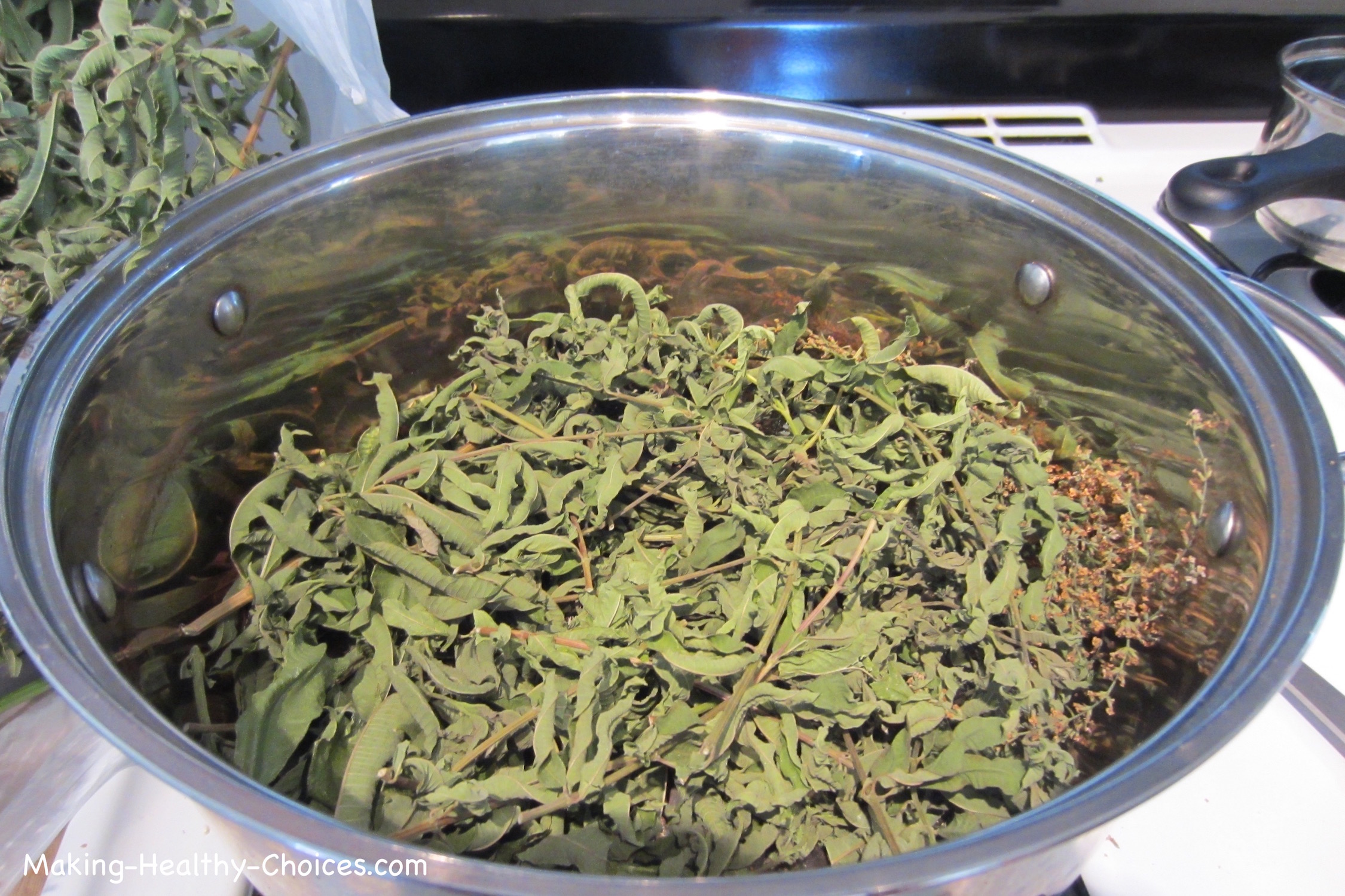 |
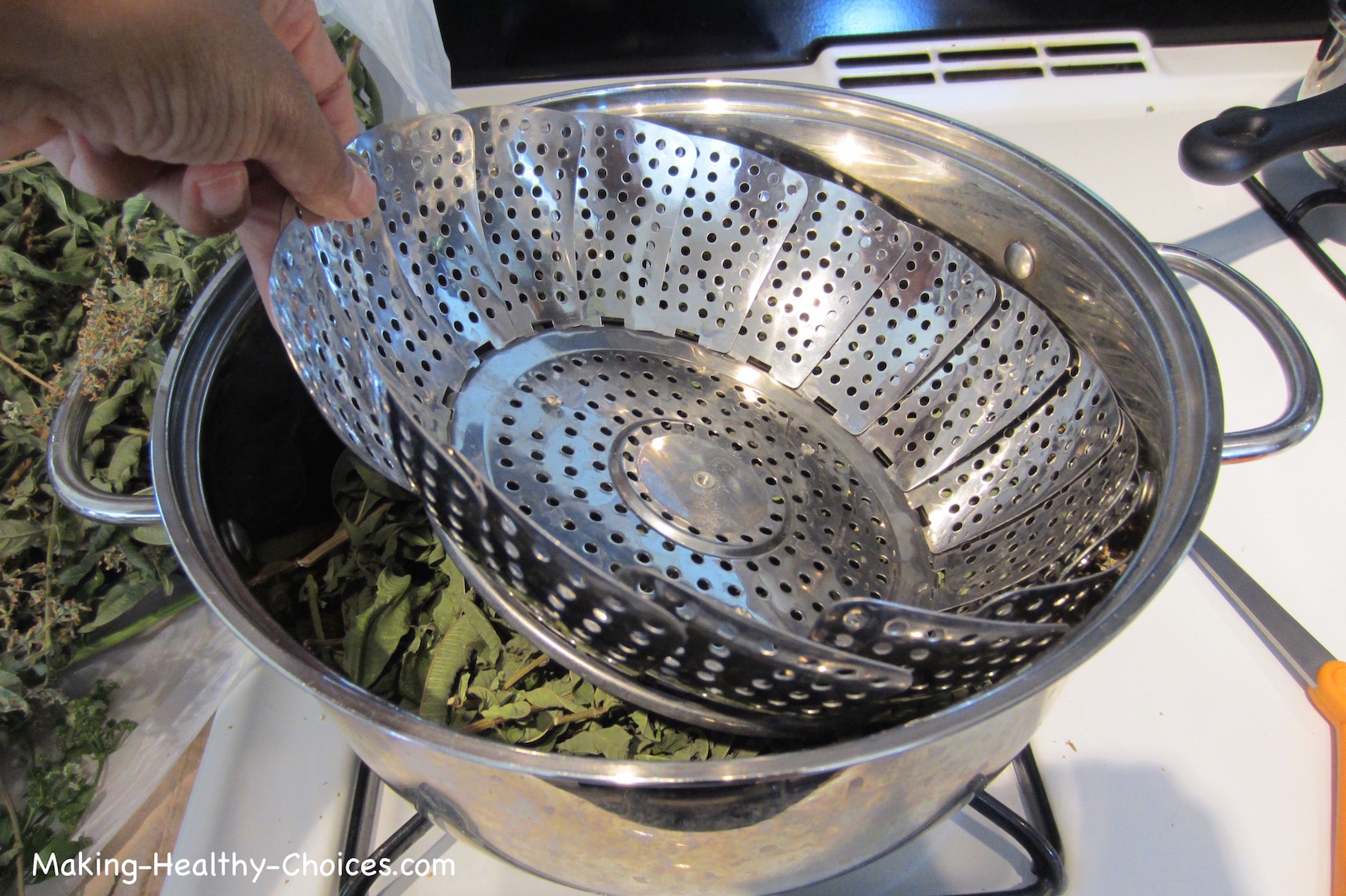 |
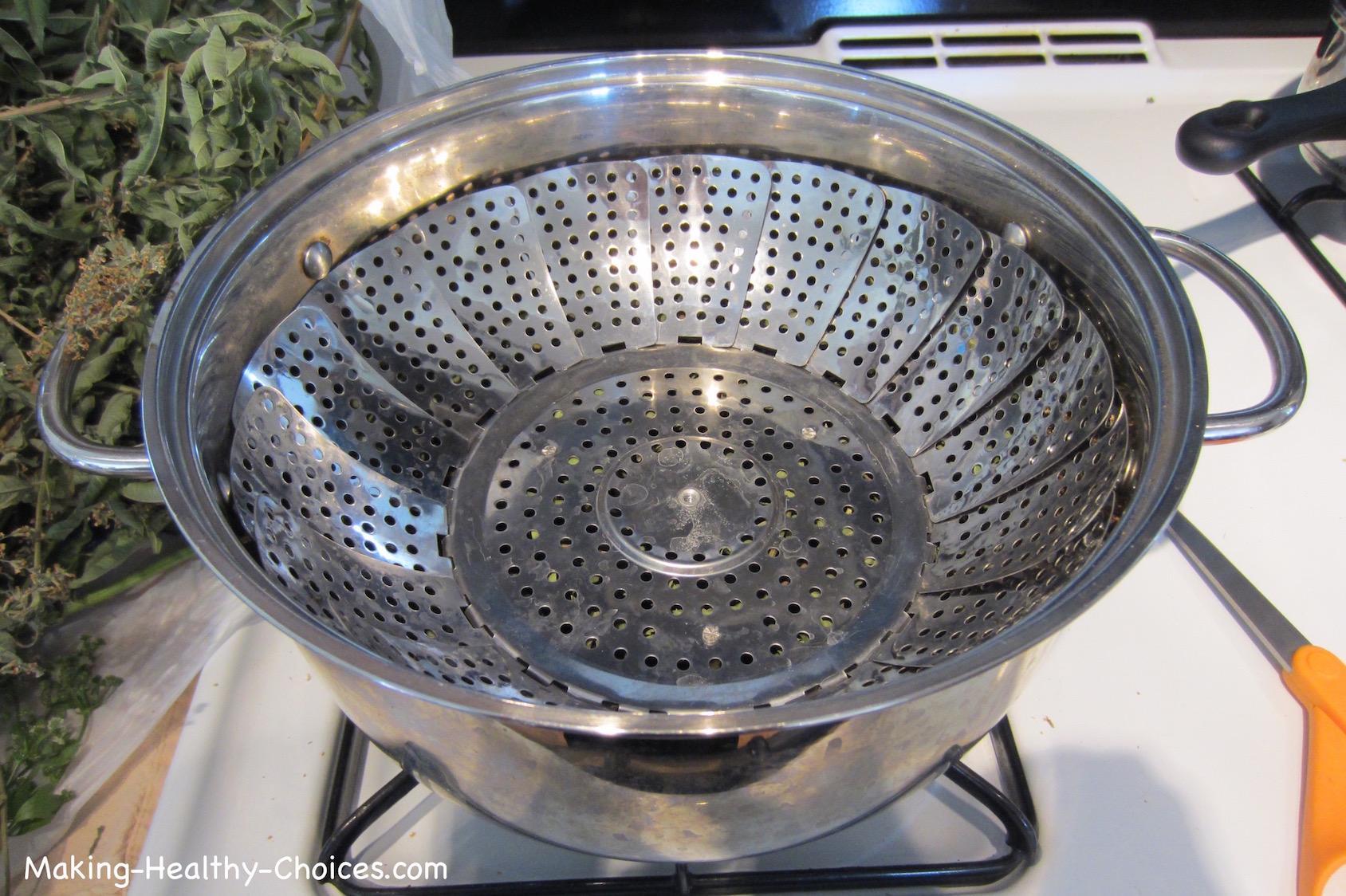 |
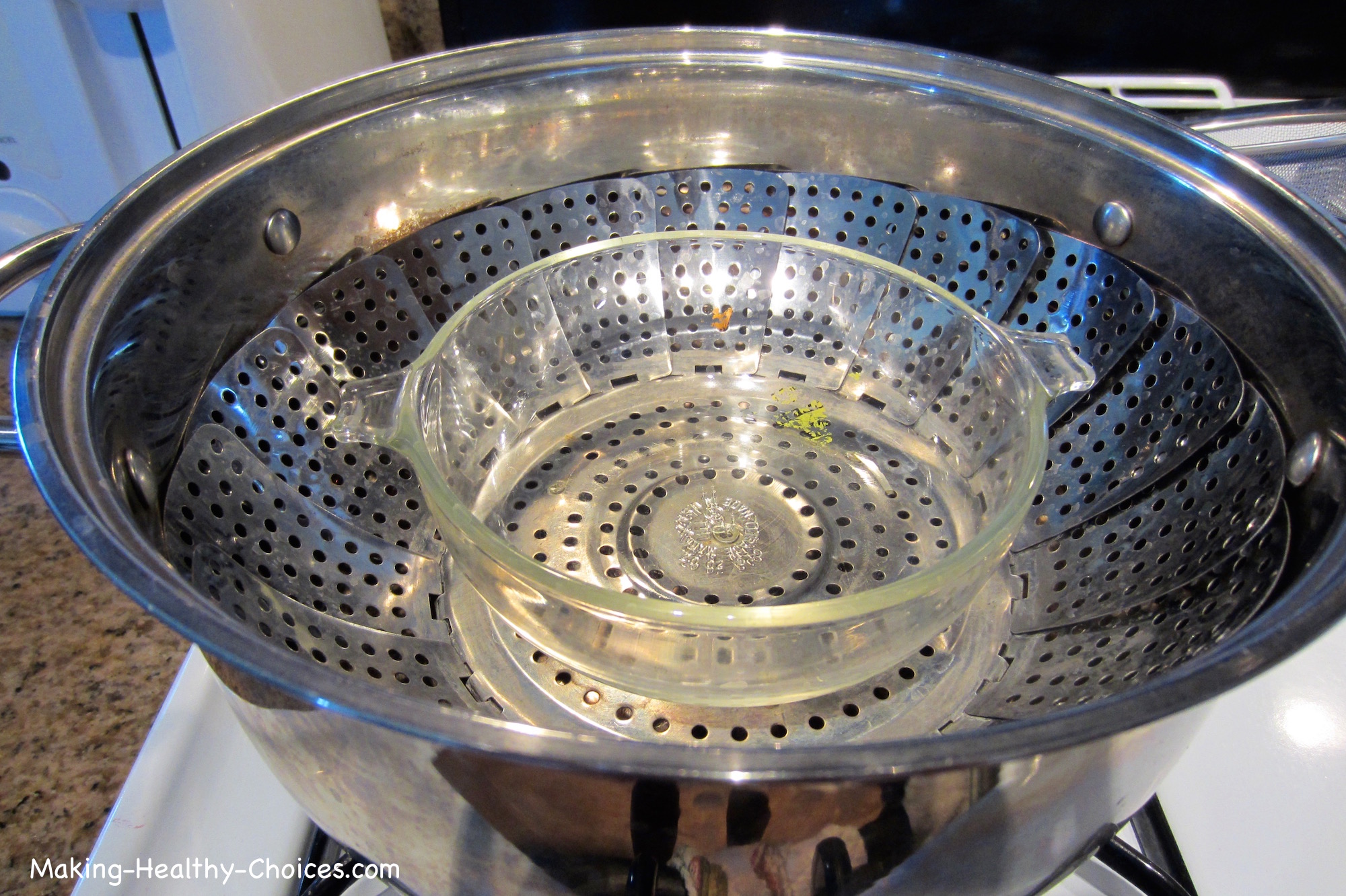 |
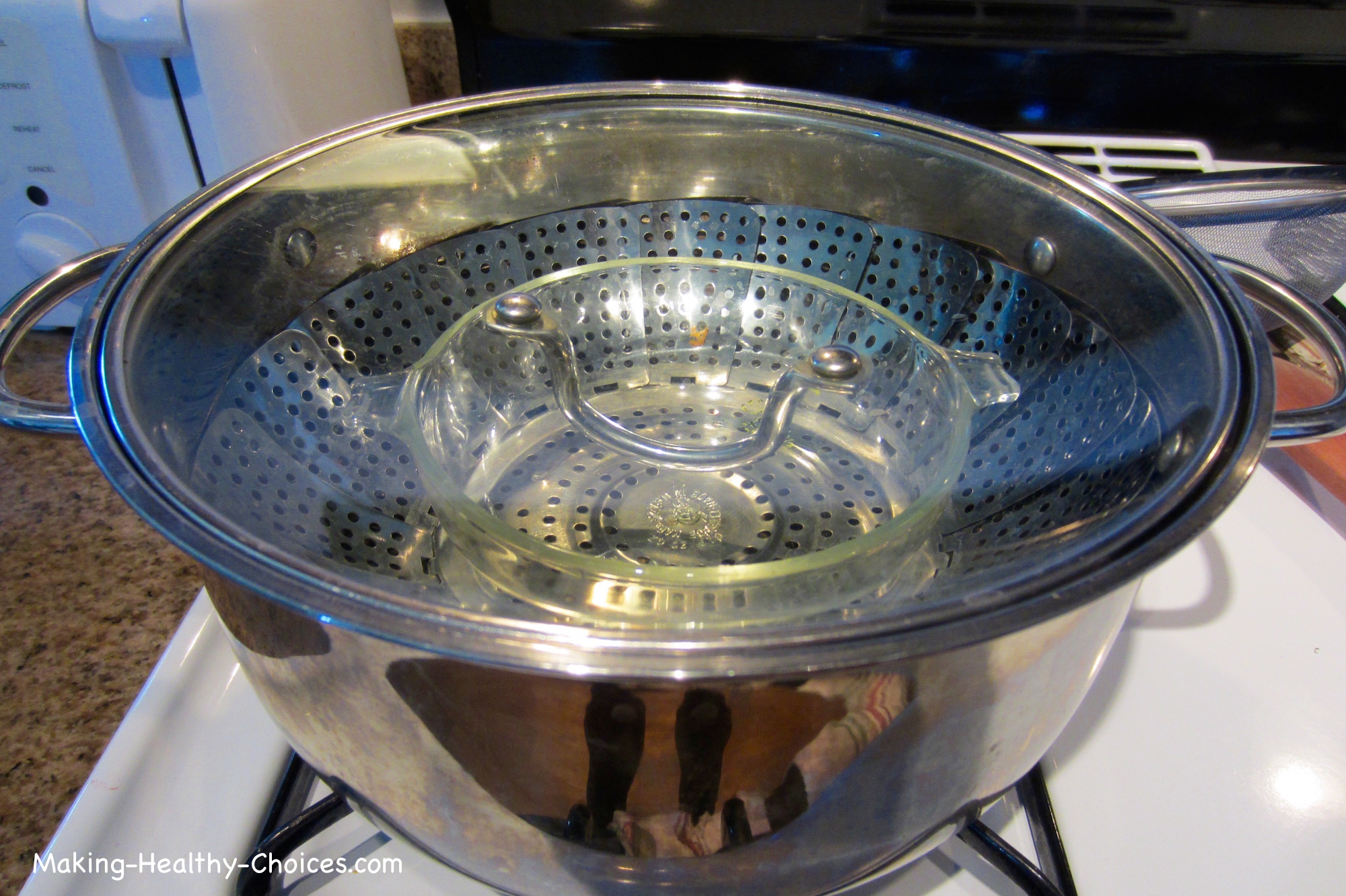 |
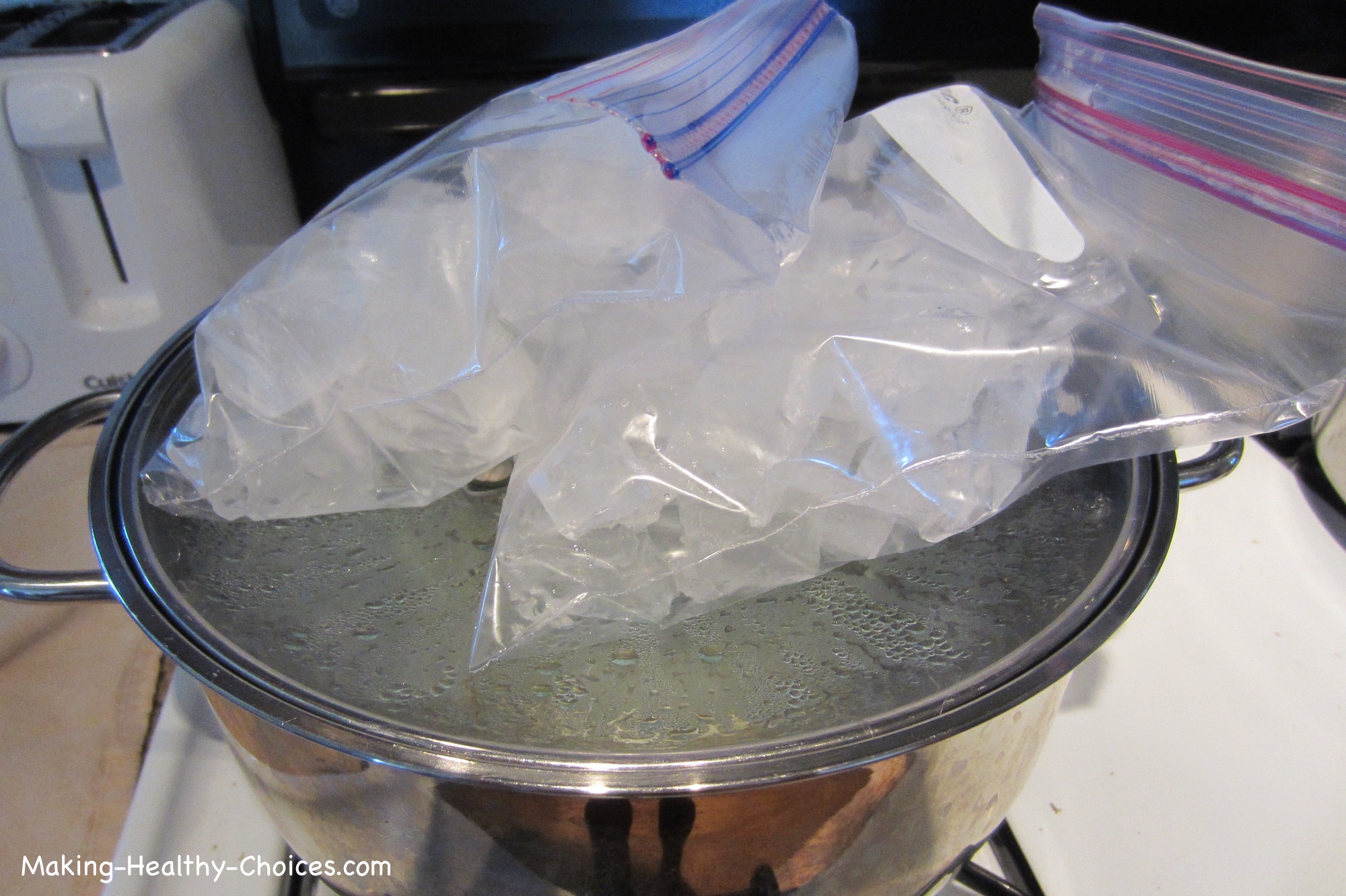 |
How to Make Hydrosol using a Brick or Stone:
The only difference with this setup is that instead of using a vegetable steamer you will use a brick or a stone. Find a stone that is flat on the top and the bottom so you can easily place your heat resistant bowl on top of it.
For this setup, I have used amethyst, rose quartz and milky quartz as I like to bring the energy of these stones into whatever I am making. Just find a rock that is the right shape and give it a good wash before using. A brick will work well because of its flat shape and again, give it a good wash before using.
- Place pot on stove.
- Place stone/brick in pot right in the center.
- Pack plant material around stone/brick just to the top of the stone.
- Cover plant material with water (use the best quality water you have), just enough water to reach the top of the stone/brick.
- Place heat resistant glass bowl on top of stone/brick.
And the rest is the same as the first method:
- Place lid inverted on pot.
- Turn heat on medium until simmering, then turn down to low.
- Place ice on top of lid
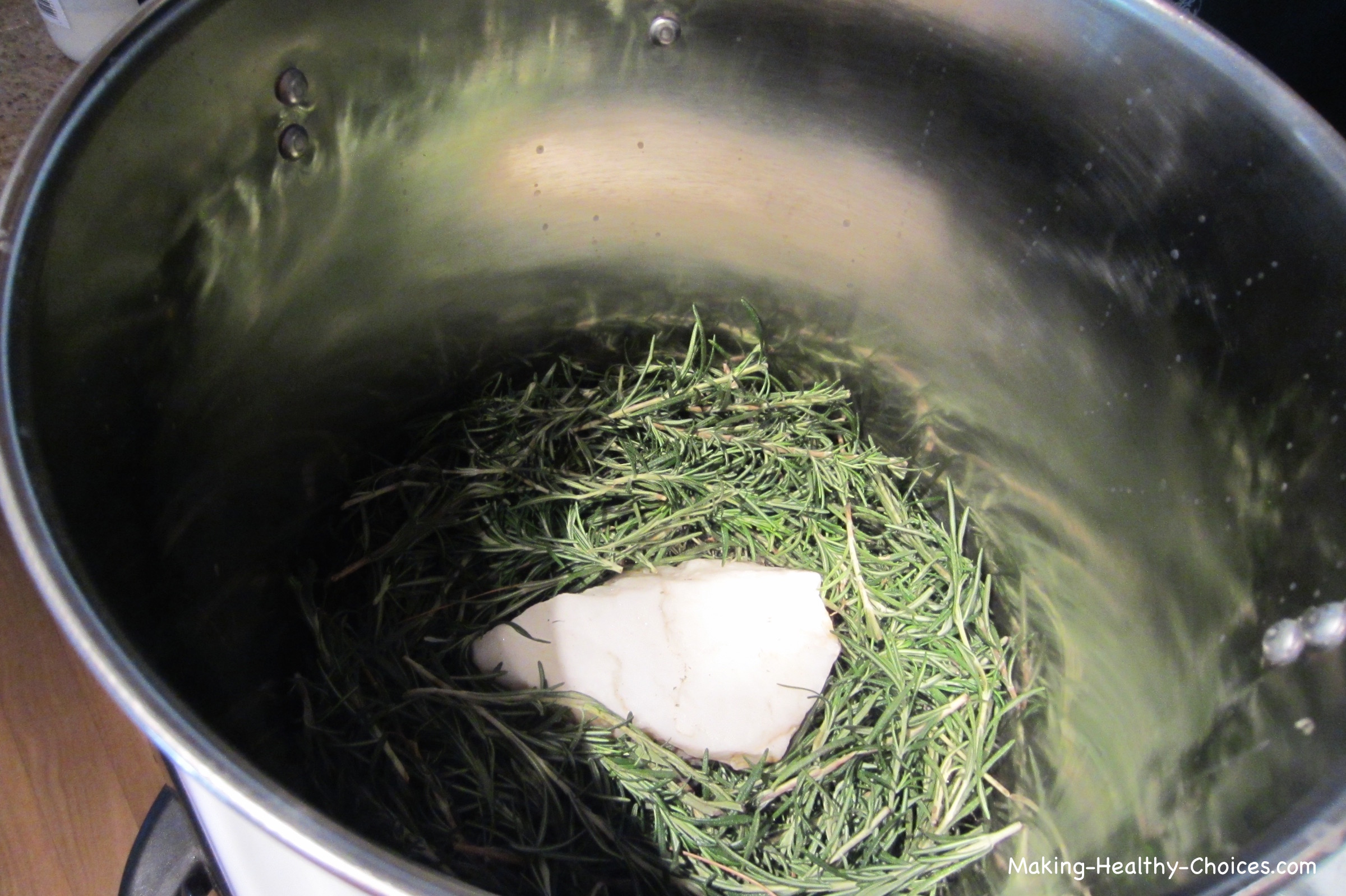 |
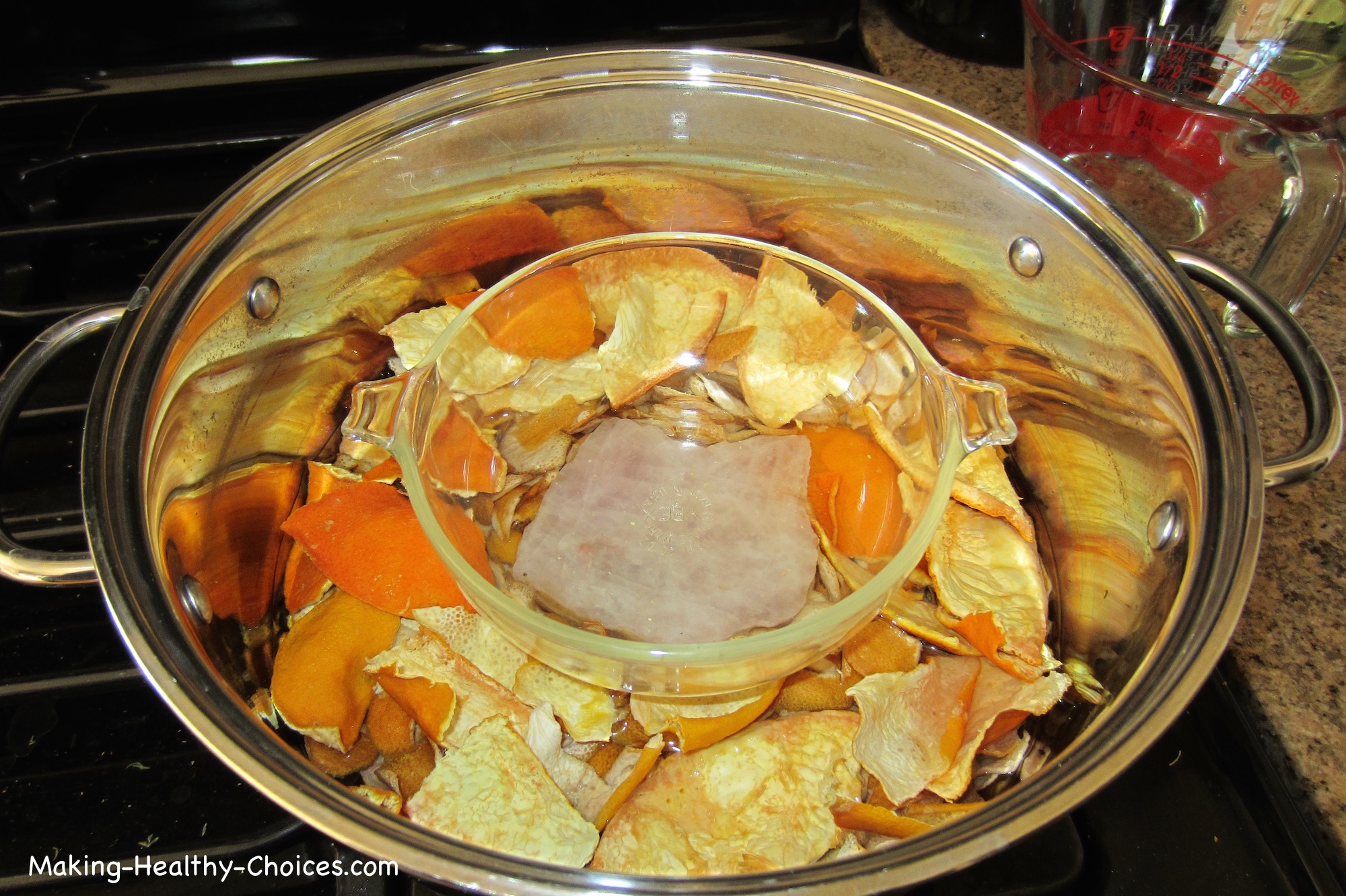 |
As the plant material is simmering in your pot, steam will rise. This steam will hit the inverted lid. Because the lid is cool with the ice, the steam will condense back into a liquid. This liquid (the distillate from the plant which is your hydrosol) will drip into the glass bowl. Over time the bowl will fill with hydrosol.
I keep my hydrosol going for several hours and during this time your home will fill with the gorgeous smell of the plant you have chosen.
Every so often check the ice and put new ice on the lid when it melts.
You will also need to keep an eye on the bowl inside the pot. This is where your hydrosol is collecting. If it gets too full, empty it into another container and replace the empty bowl back inside the pot to continue to collect more distillate. Be sure to use oven mitts as this bowl will be very hot.
How to Store Hydrosol
So, now that you know how to make hydrosol, you will also need to know the best way to store it.
Bottle this precious liquid in glass bottles and store in the fridge.
I store my hydrosols in a bigger glass bottle in the fridge and then I like to keep a small glass spray bottle out for everyday use. I will continue to refill this small bottle as needed.
Dark colored glass is nice to use as this will further protect the integrity of your hydrosols. You can purchase bottles like these here.
Be sure to label your bottles so you know what plant materials you used and when you bottled it.
If you store your hydrosols in this manner they can last quite a long time. Mine have lasted months and even years.
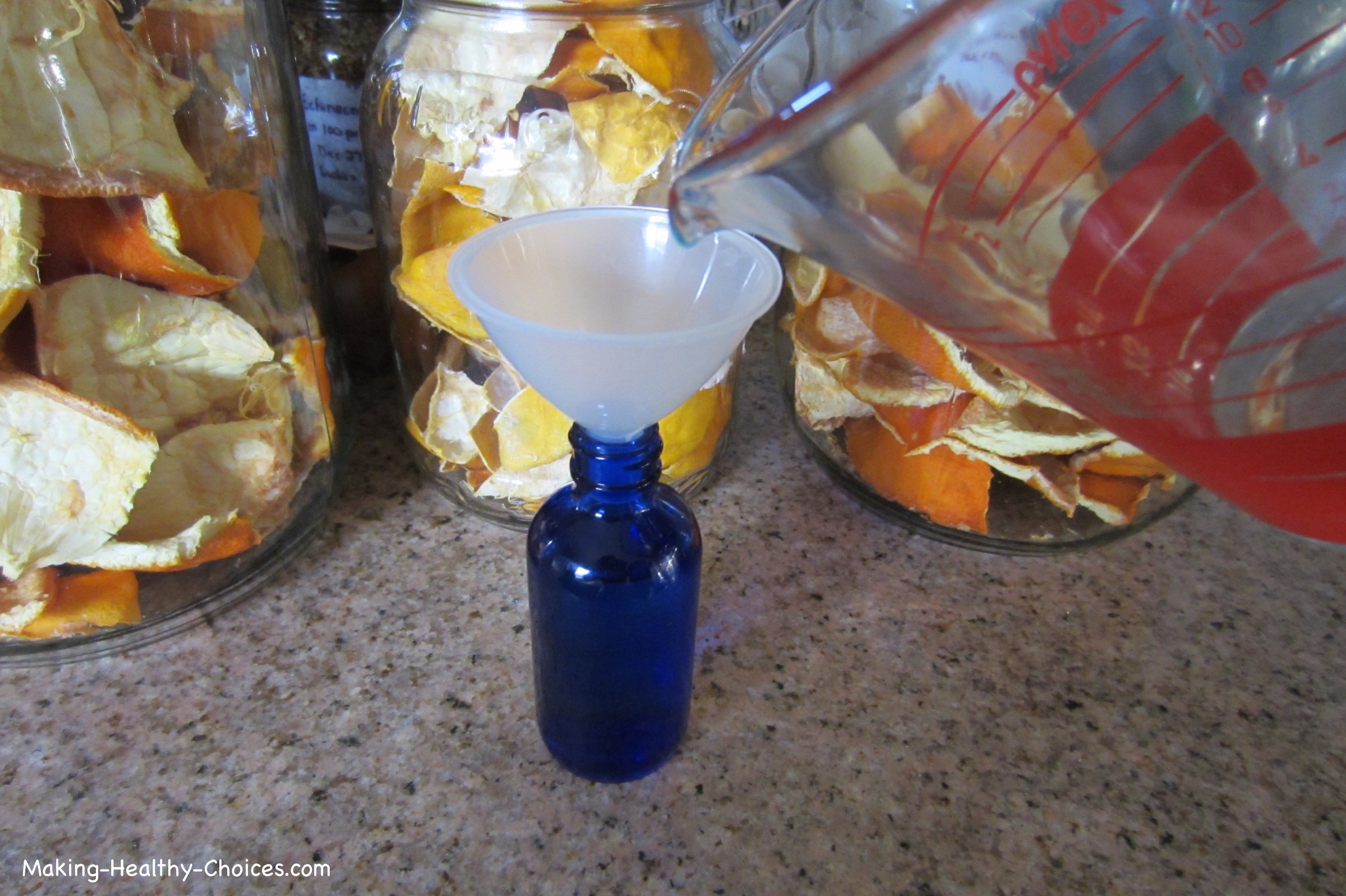 |
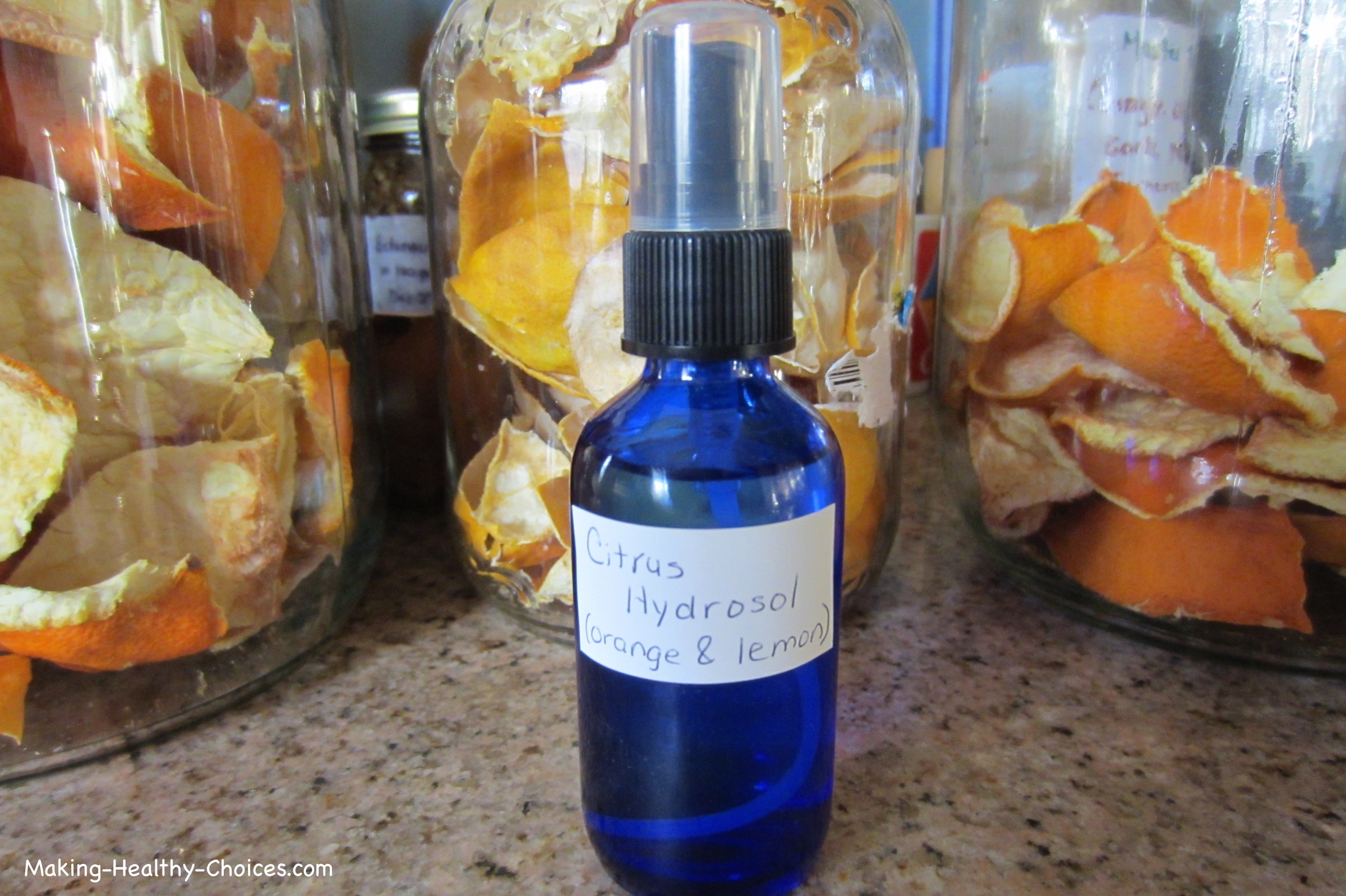 |
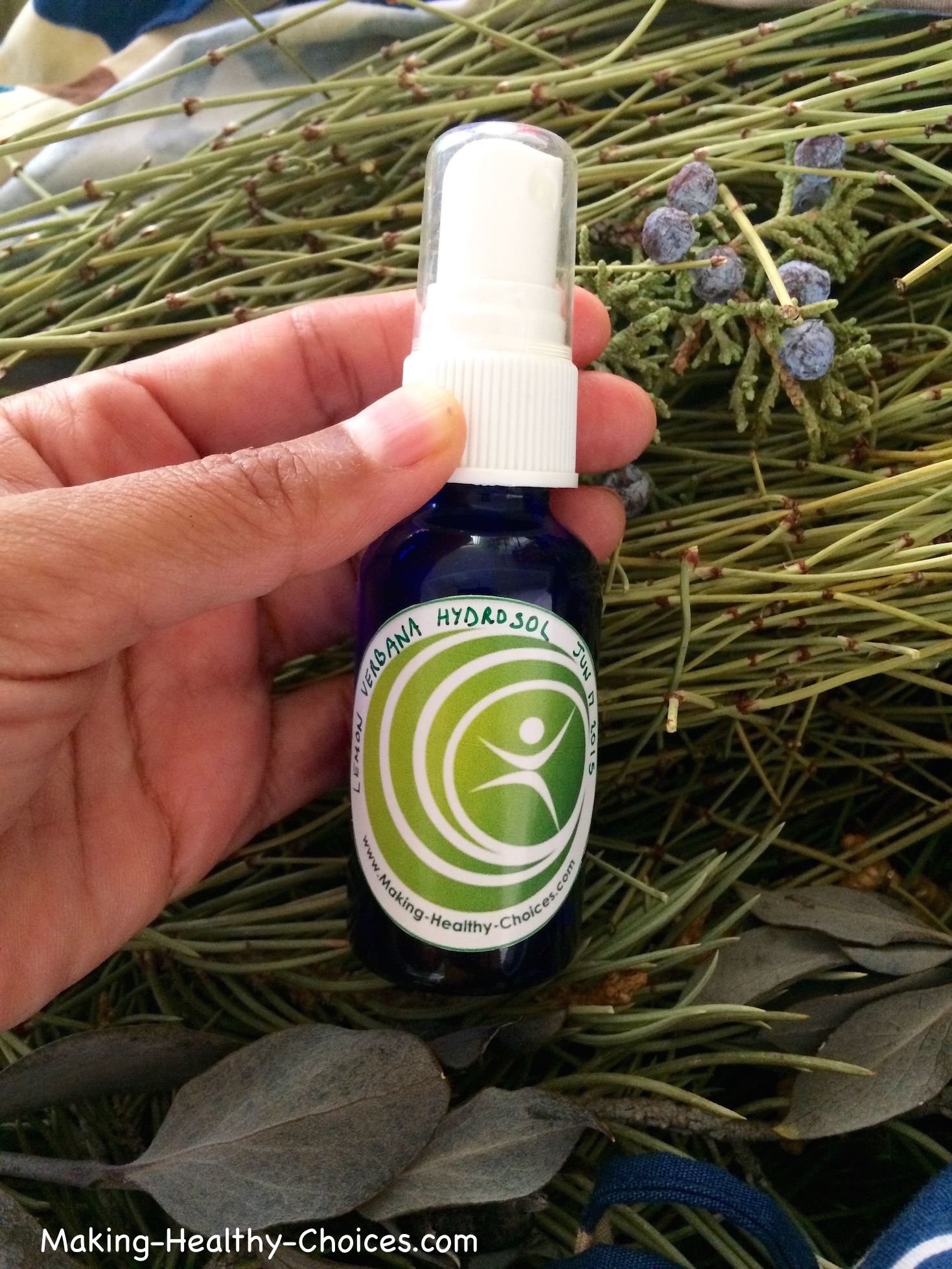 |
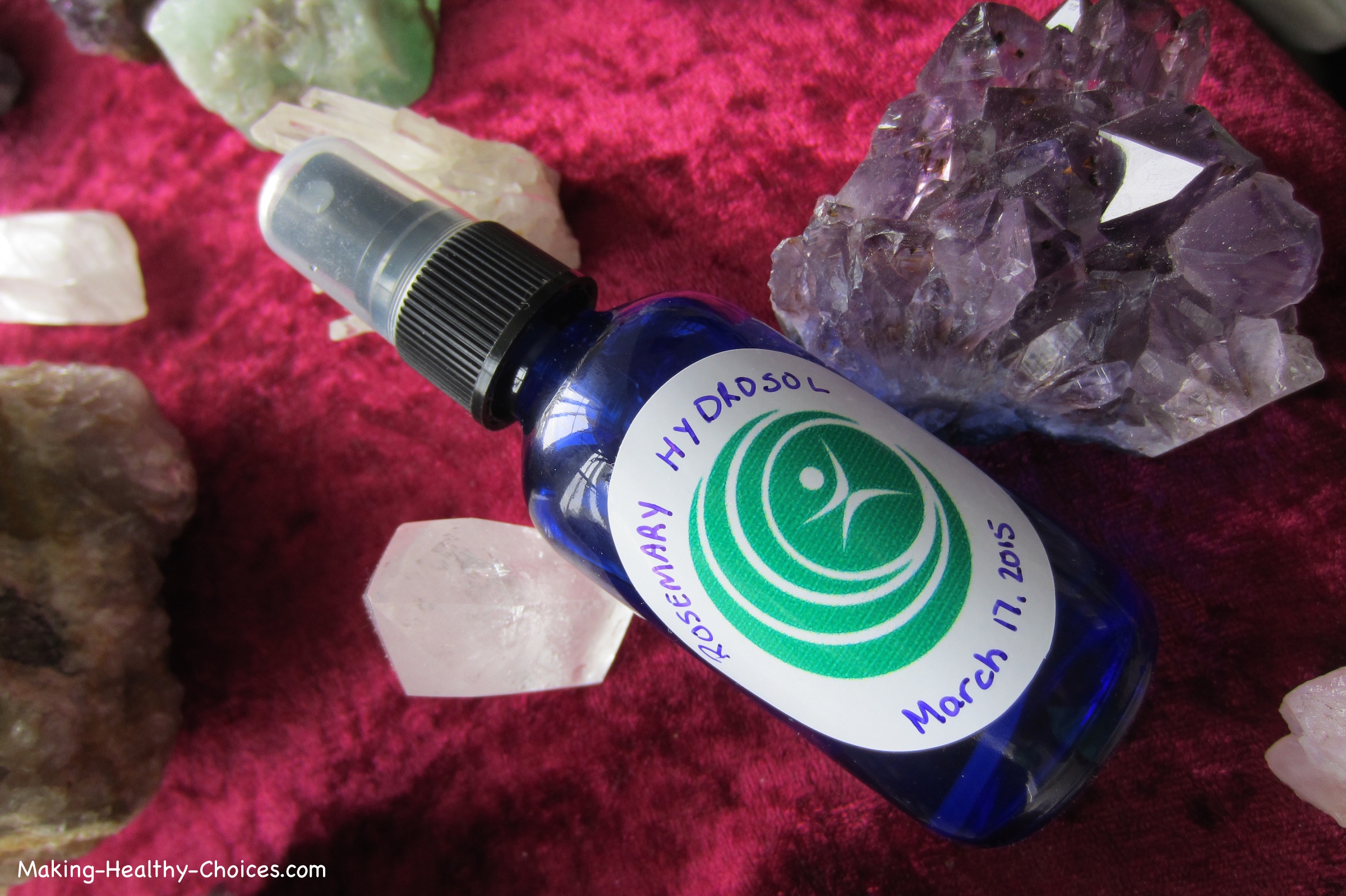 |
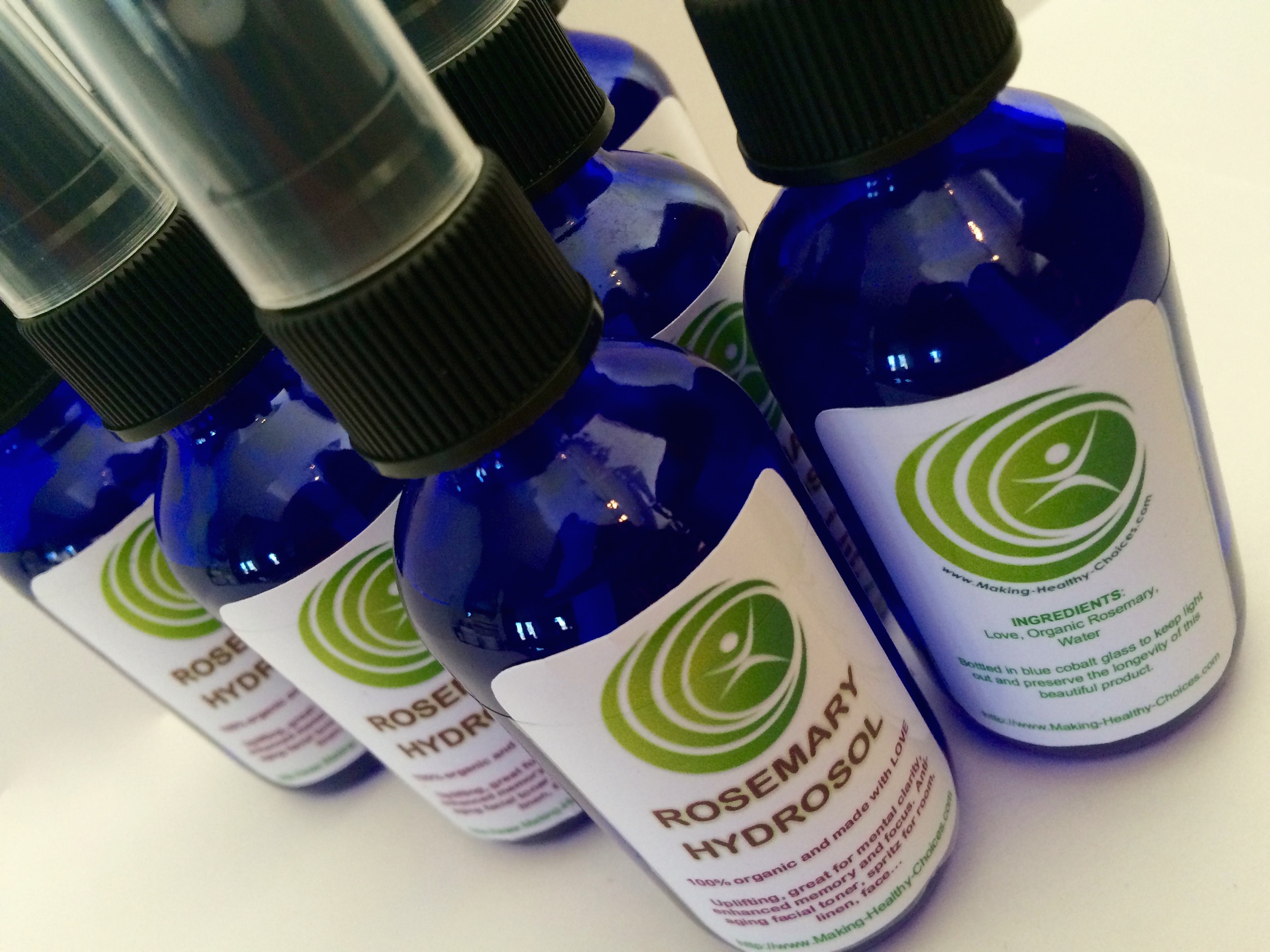
What Plants can I Use?
Use any plant that is aromatic. And, of course, avoid any plants that are toxic.
So far I have made hydrosols using:
- Lemongrass
- Rosemary
- Citrus peels (organic lemon and orange)
- Lemon Verbena
- Mint
Other plants that I am excited to try include:
- Lavender
- Lemon Balm
- Catnip
- Chamomile
- Fennel
- Rose Petals
- Jasmine Flowers
- Orange Blossoms
- Yarrow
- Sage
Another idea is to blend different plants together to create your own unique hydrosol.
I hope you have enjoyed learning how to make hydrosols. Please share your comments and questions below.
Leave 'How to Make Hydrosol', return to 'Natural Organic Skin Care'
Go to 'Making Healthy Choices' homepage
| If you've found this website helpful to you, please consider offering a donation. |










New! Comments
Share your thoughts, ideas, suggestions, questions etc. Leave a comment in the box below.